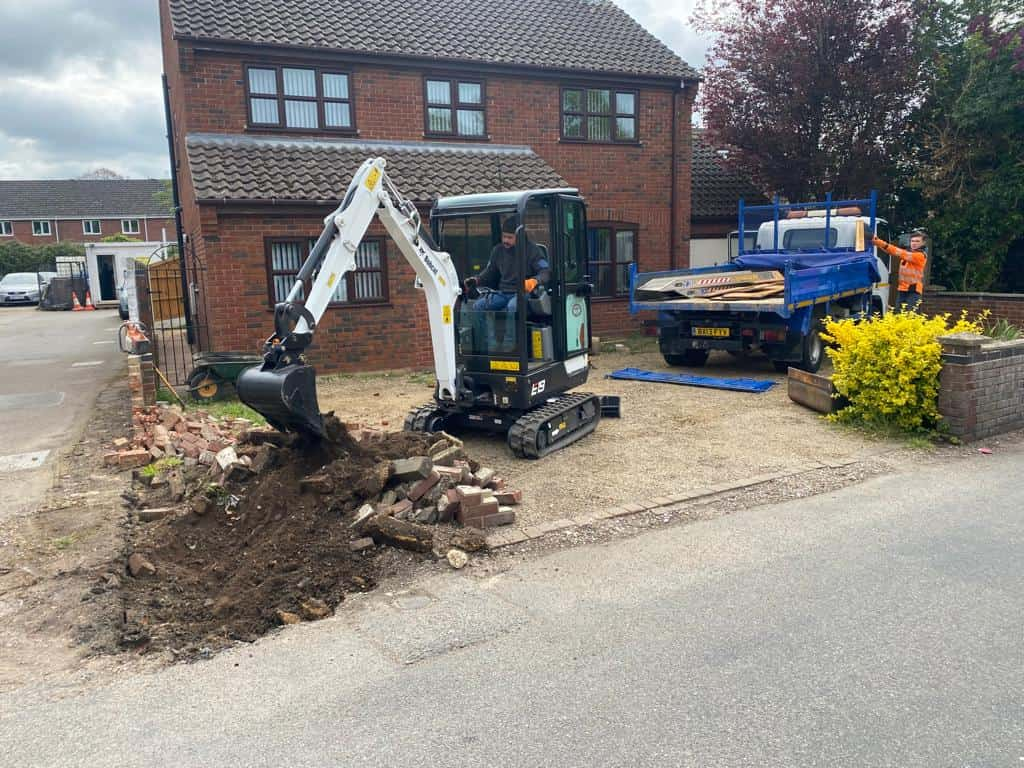Common Tarmac Problems and Their Solutions for New Builds
Introduction: Tarmac, known as asphalt or bitumen, is a popular choice for driveways, roads, and pavements due to its durability and cost-effectiveness. However, tarmac can experience issues over time, particularly in new build projects like any construction material. Understanding and addressing common tarmac problems is essential to ensure the longevity and functionality of your paved surfaces. In this blog post, brought to you by Wroxham Driveways & Surfacing, we will explore some common tarmac problems encountered in new builds and the solutions to resolve them effectively.
- Surface Cracks
Problem: Surface cracks are among the most common issues with tarmac surfaces. They can appear due to temperature fluctuations, settling of the ground, or inadequate compaction during installation.
Solution: Small surface cracks can be addressed with crack sealing or filling, which prevents moisture from penetrating the subbase and causing further damage. For more extensive cracking, resurfacing the tarmac may be necessary to provide a smooth and crack-free surface.
- Potholes
Problem: Potholes are depressions or holes in the tarmac surface, typically caused by water infiltration, freeze-thaw cycles, or heavy traffic loads. They can be unsightly and pose safety hazards.
Solution: Potholes should be repaired promptly to prevent further deterioration. The process involves cutting out the damaged area, preparing the base, and applying a new tarmac patch. Proper compaction and sealing are essential to ensure a long-lasting repair.
- Rutting
Problem: Rutting refers to the formation of depressions or grooves in the tarmac surface caused by prolonged heavy traffic or inadequate compaction during installation.
Solution: Addressing rutting may involve resurfacing the affected area to restore a smooth and even surface. Ensuring proper compaction during installation and regular maintenance can prevent rutting from occurring.
- Fading and Discoloration
Problem: Over time, tarmac surfaces may fade or change colour due to exposure to sunlight, chemicals, or oil stains.
Solution: Sealcoating can be applied to rejuvenate the appearance of faded tarmac. Sealcoating not only restores the colour but also protects against further damage from UV rays, chemicals, and stains.
- Drainage Issues
Problem: Poor drainage can lead to standing water on tarmac surfaces, weakening the subbase and resulting in surface damage.
Solution: Proper drainage design is crucial during the initial construction phase. Installing adequate drainage systems, such as French drains or surface channels, can redirect water away from the tarmac surface and prevent water-related problems.
- Edge Crumbling
Problem: Edge crumbling occurs when the edges of the tarmac surface break away or erode due to vehicle traffic or exposure to the elements.
Solution: Repairing edge crumbling involves removing the damaged area and installing a new tarmac edge. Proper compaction and sealing are essential to ensure the repaired edge remains stable.
- Vegetation Growth
Problem: Weeds, grass, or moss can grow through cracks or seams in the tarmac surface, causing aesthetic issues and potential damage.
Solution: Regular maintenance, including weed control and cleaning, can help prevent vegetation growth. Applying a weed-resistant sealant or herbicide can be effective for more extensive issues.
Conclusion: Addressing common tarmac problems in new builds is essential to ensure the longevity and functionality of your paved surfaces. Whether dealing with surface cracks, potholes, rutting, or other issues, timely and appropriate solutions are key.
Call us on: 01603 361 697
Click here to find out more about Wroxham Driveways & Surfacing
Click here to complete our contact form and see how we can help with your driveway needs.

